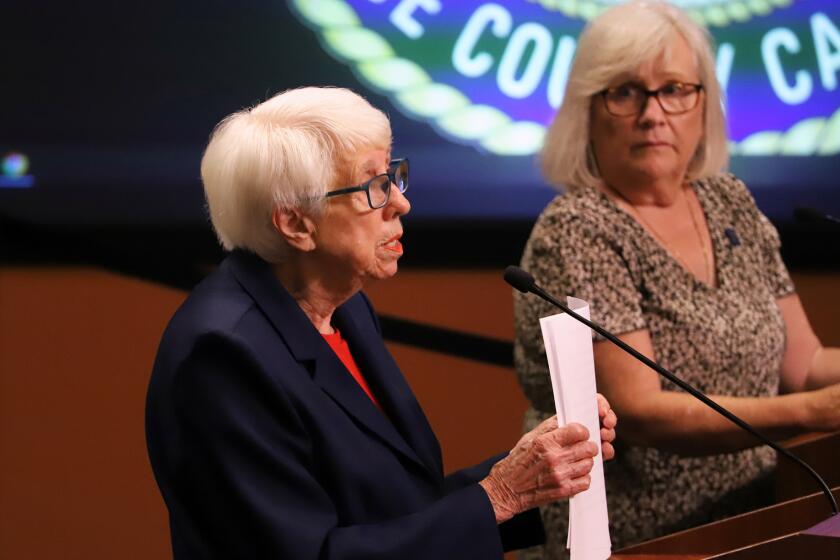UC Irvine is teaching computers new ways to ‘learn’
UC Irvine recently opened a research center that aims to improve medical care with the help of a novel form of artificial intelligence that allows computers to learn on their own.
The Center for Artificial Intelligence in Diagnostic Medicine will seek to create “deep-learning” A.I. tools to improve disease detection and prediction, diagnostics and therapy planning.
“We are developing tools from a research perspective, but more importantly, we want these tools to make an impact in helping doctors and patients,” said Daniel Chow, co-director of the center.
The center launched in July. Chow and Peter Chang, neuroradiologists in the UC Irvine Department of Radiological Sciences, are leading the effort with a staff of less than a dozen and a group of students.
While artificial intelligence research labs aren’t uncommon, the UCI center is unique in that the members aim to put their research to practical use.
“We aren’t happy with just publishing a paper,” Chang said. “We are going the last mile in translating these tools into critical practice. We want to make these tools come alive and see them used in our hospitals.”
Chow said many artificial intelligence tools are being used in the university’s hospital, including a computer that automatically determines the presence of hemorrhages in a brain based on an analysis of a CT scan.
The national average to identify a brain hemorrhage is two to four hours, but UCI’s system takes about five minutes, he said.
Chang received an award from the American Society of Neuroradiology for his development of the head exam tool, which was detailed in a paper published in late July. Also that month, the researchers finished development of an A.I. imaging technique that examines genetic mutations in brain tumors and enables the use of virtual biopsies.
The type of artificial intelligence being used in the tools is called “deep-learning” or “neural networks.” Chang said it’s the same kind that is used in self-driving cars and in voice-recognition programs like Apple’s Siri.
“It may seem like there’s been a gradual evolution over the past two decades, but this is really fundamentally newer technology than we had even a few years ago,” Chang said. “It’s driving the revolution of artificial intelligence in healthcare.”
Deep-learning A.I. differs from the older forms in how computers learn. Chow used an analogy to exemplify the difference.
“The old form of artificial intelligence is like if I wanted to teach my son how to recognize a dog from a cat and I told him to look for a couple of features — a certain type of nose, tail and ears — and when you see these features that equals a dog,” he said. “But in reality, that is not how I teach my child. Instead, I show him 10 dogs and 10 cats, and he will determine for himself what features define a dog and what makes a cat. This is the new deep-learning form of artificial intelligence.”
Chang said this method is more desirable because allowing the computer to grow and learn on its own makes it more adaptive and flexible.
In developing new artificial intelligence tools, the center is also serving as a collaborative hub for the college.
Faculty, physicians and researchers can come to the center with a concept, and the researchers will translate it into a tool as long as the work regards artificial intelligence in medicine.
The center is dealing with about two dozen projects. Most of the collaborative efforts are UCI-based, but the center is also working with other University of California programs.
“Our mission is to do this at scale,” Chang said. “We don’t want to do just two or three of these. We want to grow this.”
Twitter:@benbrazilpilot
All the latest on Orange County from Orange County.
Get our free TimesOC newsletter.
You may occasionally receive promotional content from the Daily Pilot.




